Xiaomi 15S Pro with self-developed Xuanjie O1 chip: Performance exceeds expectations!
![]() 05/23 2025
05/23 2025
![]() 693
693
A significant Xiaomi flagship.
As an industry insider, I actually knew about Xiaomi's self-developed chip towards the end of last year. However, at that time, details like "when it would be released, what its performance would be, its positioning, and its name" were all unknowns.
Finally, in May, I got my hands on the Xiaomi 15S Pro, which is the first to feature Xiaomi's second self-developed SoC, Xuanjie O1. Does it live up to the market and Xiaomi's expectations?
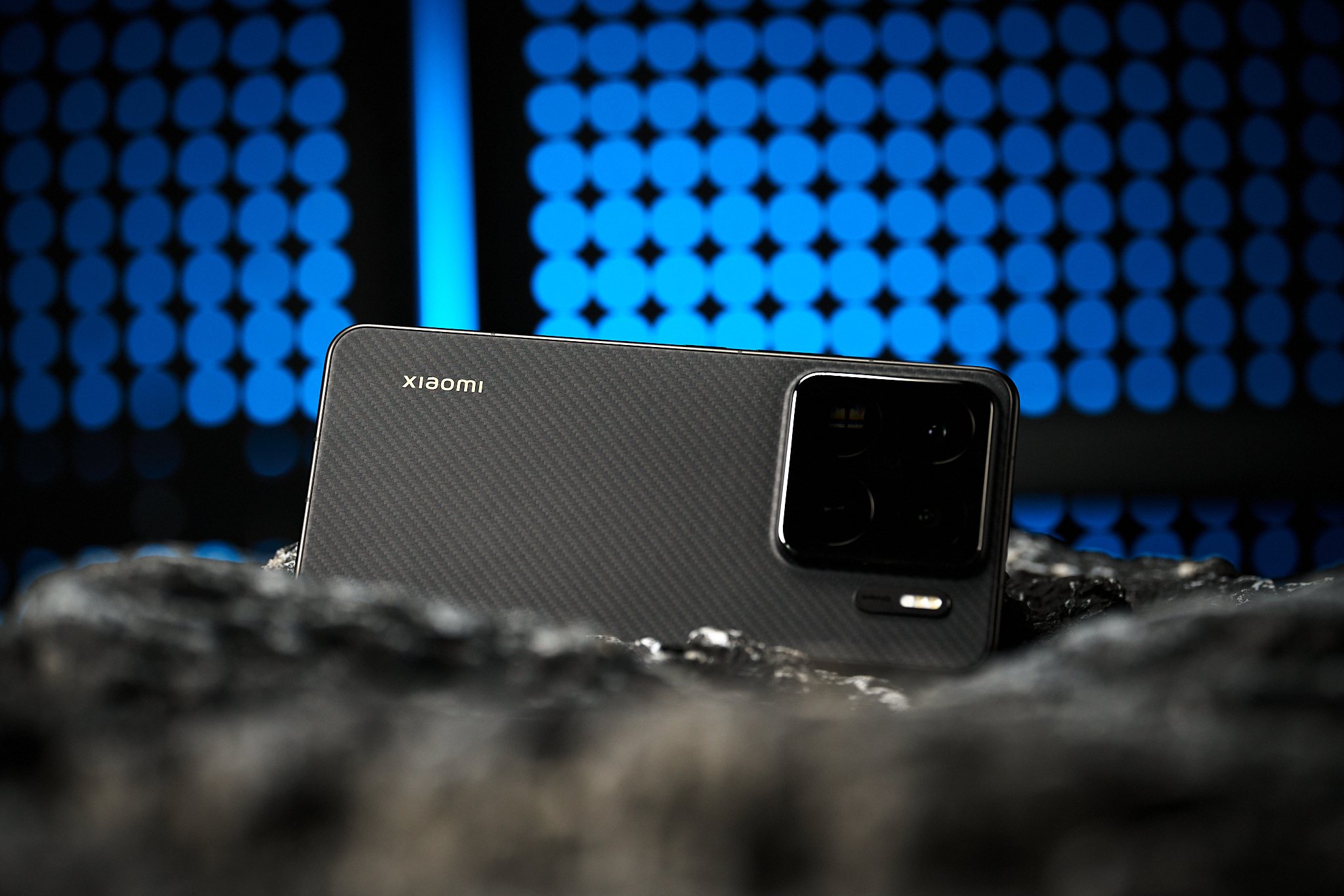
(Image source: Lei Technology)
Without further ado, let's dive into the review.
The power of Xuanjie O1: Impressive
To be honest, I didn't have high expectations for Xuanjie O1. The Surge S1 processor on Xiaomi 5C was a huge setback for Xiaomi's self-developed chip journey, leading many, including myself, to believe that Xiaomi's self-developed chips have always been more talked about than delivered.
So, can Xuanjie O1 completely change the market's inherent impression of Xiaomi's self-developed chips? My conclusion is yes, and it definitely exceeds everyone's expectations.
Let's start with Xuanjie O1's architecture. It adopts a dual-ultra-core, 10-core architecture with impressive core parameters: 2 X925 ultra-cores with a clock speed of 3.9GHz, 4 A725 performance cores at 3.4GHz, 2 A725 low-frequency efficiency cores at 1.9GHz, and 2 A520 efficiency cores at 1.8GHz.
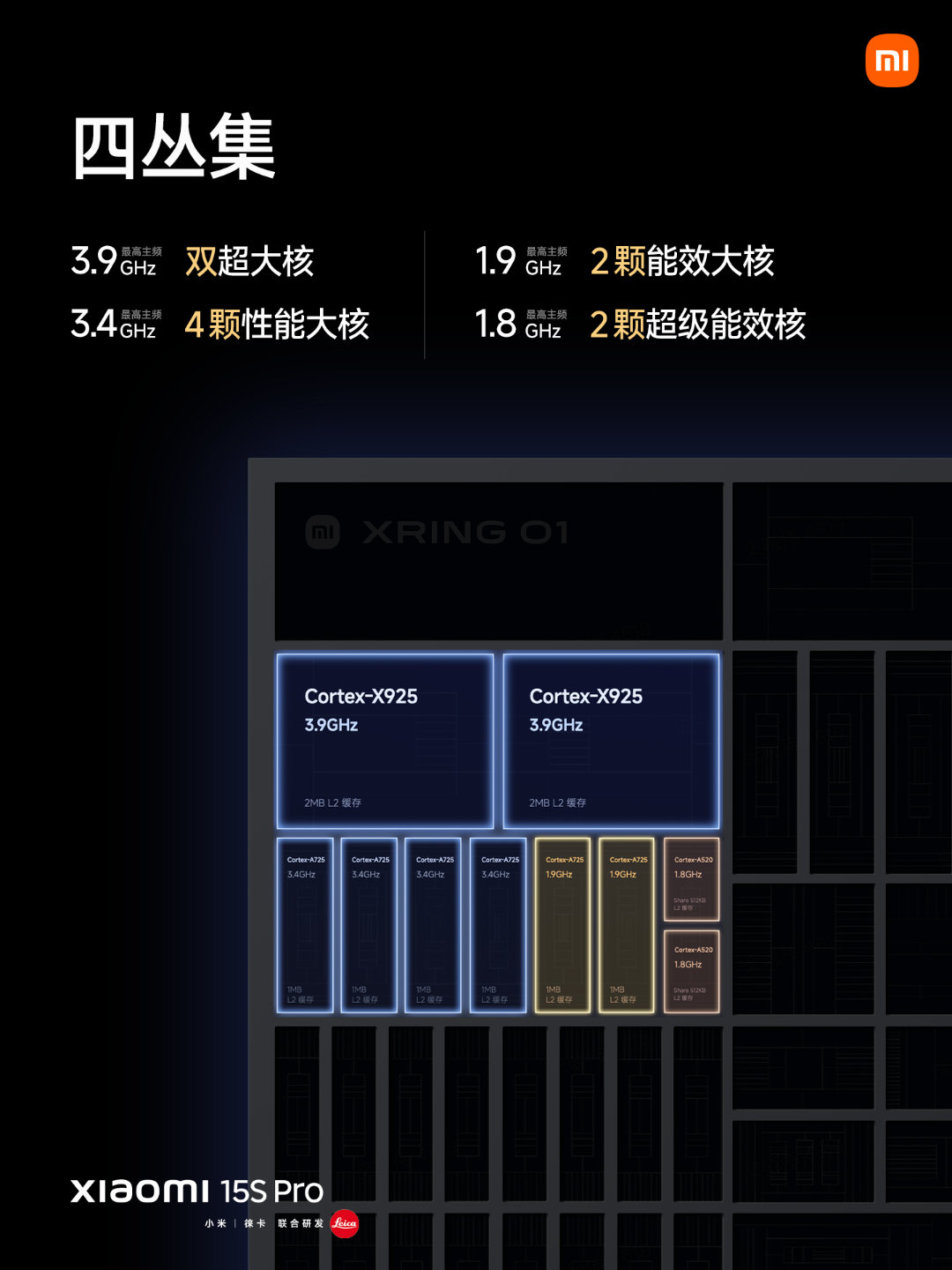
(Image source: Xiaomi)
The advantages of this architecture are obvious. When users use their phones daily, the chip outputs performance in a relatively stable manner. When high-performance scenarios are needed, it can accurately and quickly unleash sufficient performance.
I originally thought Xuanjie O1 would adopt a relatively conservative approach, but I didn't expect it to come out with two high-frequency ultra-core solutions right away. Ultra-cores are significantly more efficient than large cores, which are far more efficient than small cores. In other words, using ultra-cores to run at the frequency of large cores and large cores to run at the frequency of small cores not only boosts performance but also improves efficiency and energy efficiency.
In the simplest terms, it offers ultra-high clock speeds, super performance, and ultra-low power consumption.
Another point worth noting from Xiaomi's official data is the ultra-large CPU cache. The ultra-cores are equipped with 2MB L2 cache, and the large cores have 1MB L2 cache. This combination, coupled with the extremely high clock speeds, ensures that its theoretical performance will not disappoint.
On the GPU side, Xuanjie O1 is equipped with the Immortalis-G925 GPU with a 16-core version. Officially, its performance is 57% stronger than Apple's A18 Pro, which is not too surprising to me, as Apple's GPU performance has been lackluster in recent years.
Additionally, Xuanjie O1 integrates approximately 19 billion transistors, which is roughly on par with Apple's A17 Pro, which is quite impressive.
From the spec sheet, Xuanjie O1 is undoubtedly a heavily stacked processor. However, we can also spot some minor issues: Xuanjie O1 does not adopt the currently popular all-large-core scheme, and the number of transistors is not exceptionally high.
My guess is that Xuanjie O1 was actually produced in 2024. After all, media reports at the end of last year indicated that Xiaomi had successfully taped out "China's first 3nm process mobile system-on-chip," which can basically be confirmed as Xuanjie O1. Moreover, it is certain that Xuanjie O2 and even O3 are already in development.
I won't say much more. Let's dive into a detailed performance test of Xuanjie O1.
Starting with theoretical performance tests, in an indoor environment with a room temperature of 24℃, the Xiaomi 15S Pro scored 2,479,766 points in AnTuTu benchmarks, with outstanding CPU performance.
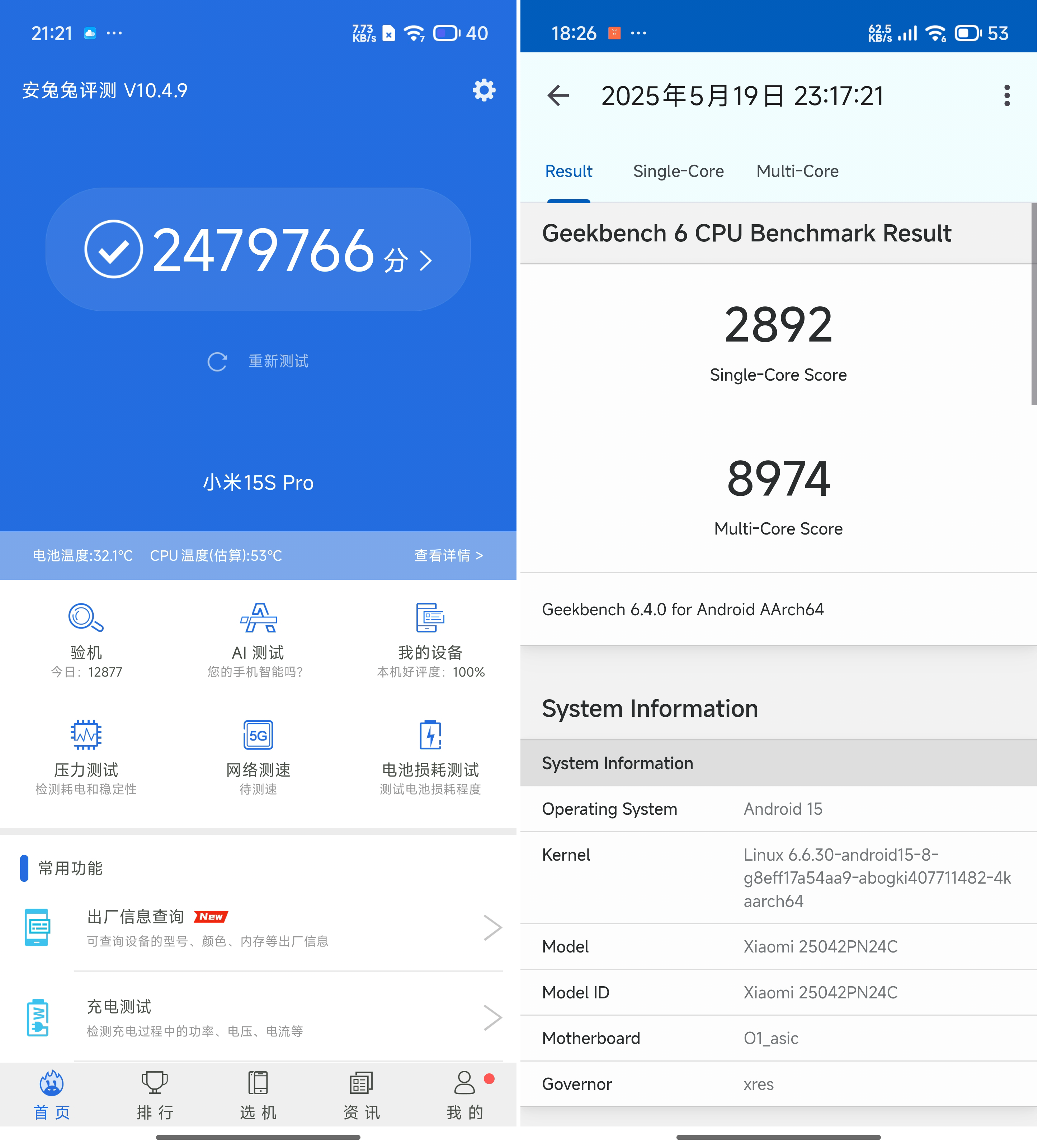
(Image source: Lei Technology)
In Geekbench 6, it scored 2,892 points in single-core tests and 8,974 points in multi-core tests. For comparison, the iPhone 16 Pro scored 3,018 points in single-core and 7,751 points in multi-core tests.
In GFXBench 1080P Aztec Ruins Vulkan, the average frame rate reached 233 FPS. It appears that Xuanjie O1's theoretical performance, both in CPU and GPU, has surpassed Apple's A18 Pro processor.

(Image source: Lei Technology)
Judging from the theoretical performance alone, I could already guess how well the Xiaomi 15S Pro would perform in actual gaming. However, to further validate my guess, we used "Genshin Impact" and "Honkai: Star Rail" for testing.
Before the test, let me explain the test environment. This test was conducted in an air-conditioned room with a temperature of 25℃. The phone used a WiFi network, and the performance mode was selected in the game toolbar. All settable games in the game center were set to high-quality mode, and the phone's brightness was adjusted to 70%, to simulate as closely as possible the real-world scenario for users.
Starting with "Genshin Impact," with all graphics settings at their highest, the Xiaomi 15S Pro maintained near-full frame rates throughout the half-hour gameplay, averaging 59.8 FPS with minimal fluctuations. There was no lag during the gameplay, making me wonder if this performance was really from Xiaomi's self-developed chip.
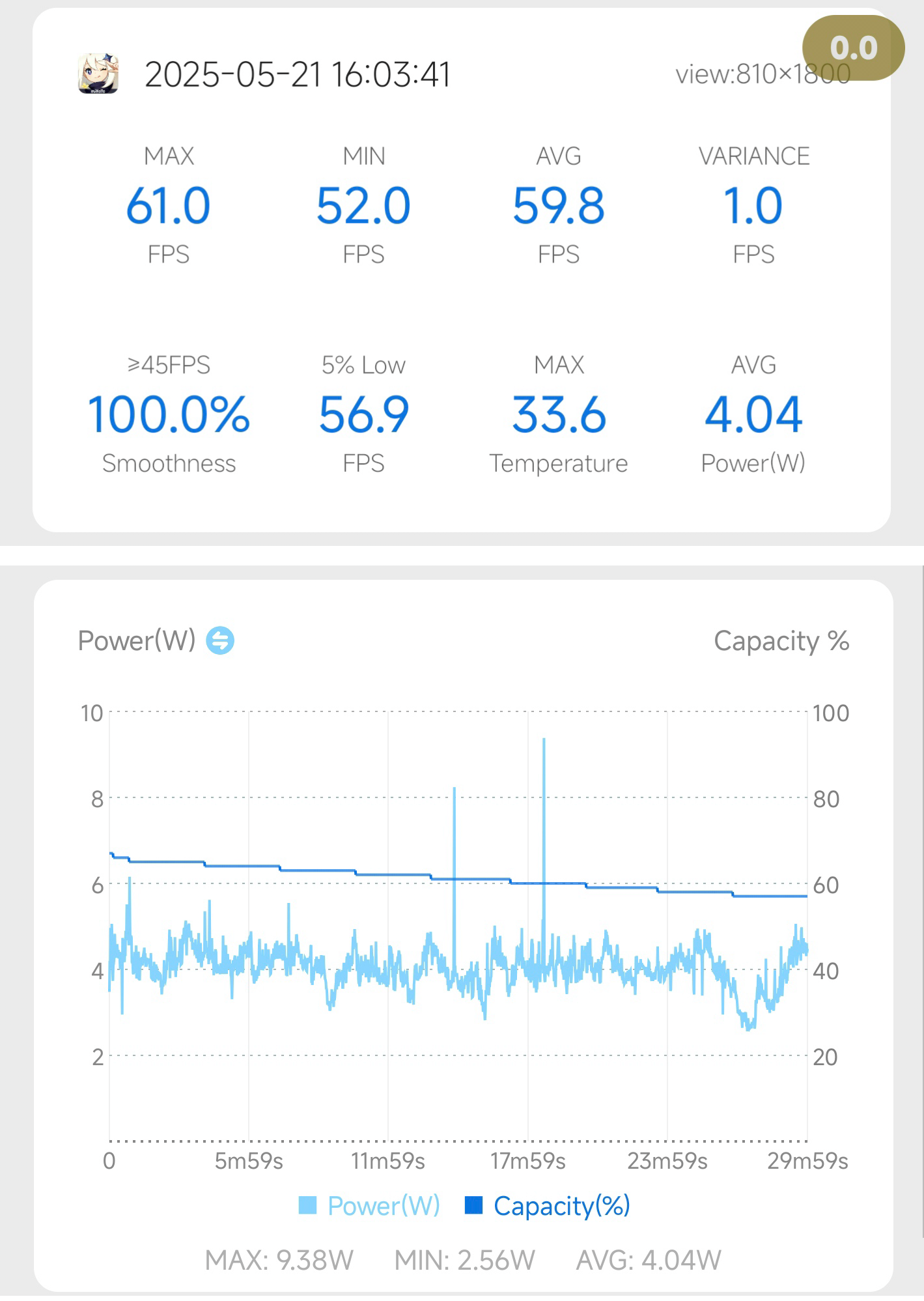
(Image source: Lei Technology)
In "Honkai: Star Rail," another performance-intensive game, the Xiaomi 15S Pro performed similarly: an average frame rate of 58.2 FPS. There were brief lags during scenes with heavy skill effects, but overall, the performance was smooth and seamless.
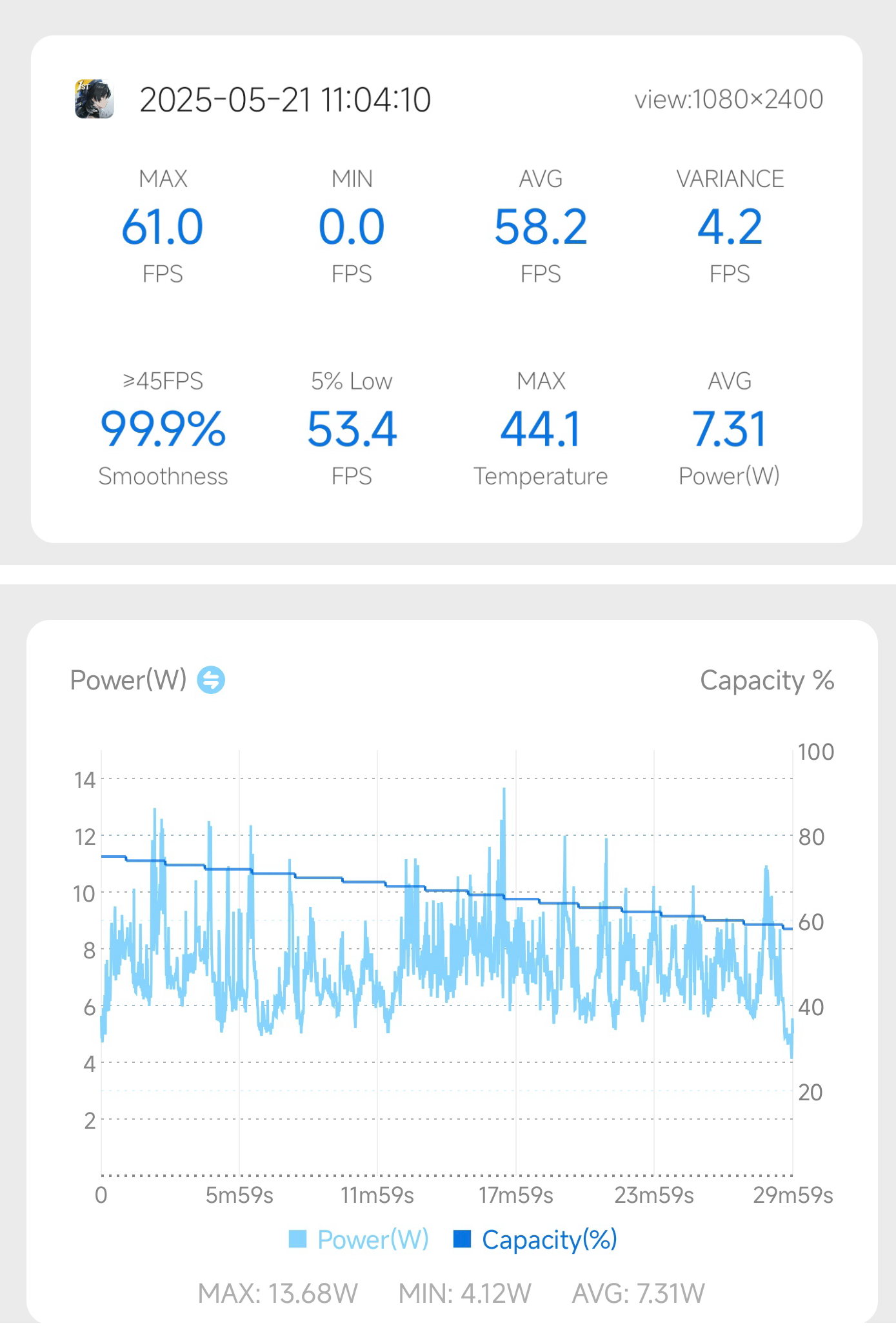
(Image source: Lei Technology)
Regarding body temperature, since heat mainly concentrates in the upper half and frame, I recommend using a phone case when playing high-quality mobile games. Otherwise, it may detract from the gaming experience.
Of course, all the above tests were conducted in a comfortably air-conditioned room. Taking advantage of the sunny weather in Guangzhou, I moved the test environment outdoors under the scorching sun to see if Xuanjie O1 could still perform well at 33℃. (Other test factors: 80% screen brightness, single-SIM 5G network, highest game graphics settings)
In this environment, I ran "Genshin Impact" for 30 minutes. The average frame rate was around 52 FPS, and the phone's temperature was significantly higher than indoors. After 20 minutes, the screen brightness decreased noticeably and the frame rate fluctuated, but there was no frame-locking or network disruption.
If it weren't for the intense outdoor heat, I would have tested how long Xuanjie O1 could hold out before frame-locking.
Additionally, have you noticed that the Xiaomi 15S Pro's power consumption is not as excessive as one might expect? In both high-quality mobile games, the average power consumption was between 5-9W. I originally thought Xiaomi's self-developed chip, after so many years, might stumble in either performance or power consumption. Unexpectedly, Xiaomi delivered such a technical answer in its first official return to the mobile SoC battlefield, which can be described as a pleasant surprise, even "astonishing."
Surpassing Apple in video starts with self-developed chips?
Besides gaming performance, Xuanjie O1 has undergone optimizations and upgrades in its ISP architecture, splitting the mainstream two-stage pipeline architecture into a three-stage one, resulting in higher processing speeds and better image quality.
I won't keep you in suspense any longer. The biggest improvement of Xuanjie O1 in imaging is night video. Android's video capabilities have long been criticized. Many manufacturers boast about their video performance at launch events, claiming they can easily outperform Apple and Samsung.
But how do they actually perform? While the image quality and frame rate are indeed good, issues like the jelly effect, audio clipping, and poor image stabilization cannot be ignored. It's what we often say, "never loses in benchmarks but always loses in real-world experience."
We all know that night video is different from still photos. Night video requires real-time processing of massive amounts of data, posing high demands on a phone's ISP architecture and related algorithms.
Although current domestic phones have completely "outperformed" Apple in night photography, their video performance leaves much to be desired. In low-light environments, the images are either too dark and blurry or too bright, resulting in a screen full of noise. They are functional but far from practical.
Therefore, for this section, I also invited the latest iPhone flagship, the iPhone 16 Pro, as a reference. From the GIF, we can see that in 1x night video, there isn't a significant gap between Xiaomi and iPhone, even though iPhone's hardware parameters are inferior to Xiaomi's. This proves that iPhone's video algorithm is still top-notch.

(Image source: Lei Technology, iPhone 16 Pro)

(Image source: Lei Technology, Xiaomi 15S Pro)
However, when I adjusted the zoom to 2x and 5x, the gap between the two became very apparent. Especially at 5x zoom, iPhone 16 Pro's night video algorithm stumbled again, blindly increasing the brightness of the image. While the image was indeed brighter than what the naked eye could see, it also resulted in noticeable noise and inadequate suppression of highlights. Coupled with the inherited "ghosting" issue, it's easy to identify which is the iPhone without additional annotations.

(Image source: Lei Technology, iPhone 16 Pro)

(Image source: Lei Technology, Xiaomi 15S Pro)
Xiaomi 15S Pro's performance is commendable. Issues commonly seen in domestic phones, such as erratic screen brightness, poor image stabilization, and ghosting, did not occur.
Of course, it's impossible to say that Xiaomi 15S Pro's imaging is flawless. Perhaps Xuanjie O1's algorithm tuning for still photos is not yet up to par. Xiaomi 15S Pro's photography capabilities are only average. However, I believe Xiaomi's relevant team can optimize it before its official release.
Minor design changes but significant commemorative value
The Xiaomi 15S Pro doesn't differ much in appearance from its "younger brother," the Xiaomi 15 Pro. They share the same design ID, excellent hand feel, and ultra-narrow bezel curved screen. (Dimensions: 161.3mm long, 75.3mm wide, 8.33mm thick, and 216g in weight)
However, there are some design changes in Xiaomi 15S Pro. For example, there is an independent raised area next to the camera Deco, with the text "XRing," which is the code name for Xuanjie.
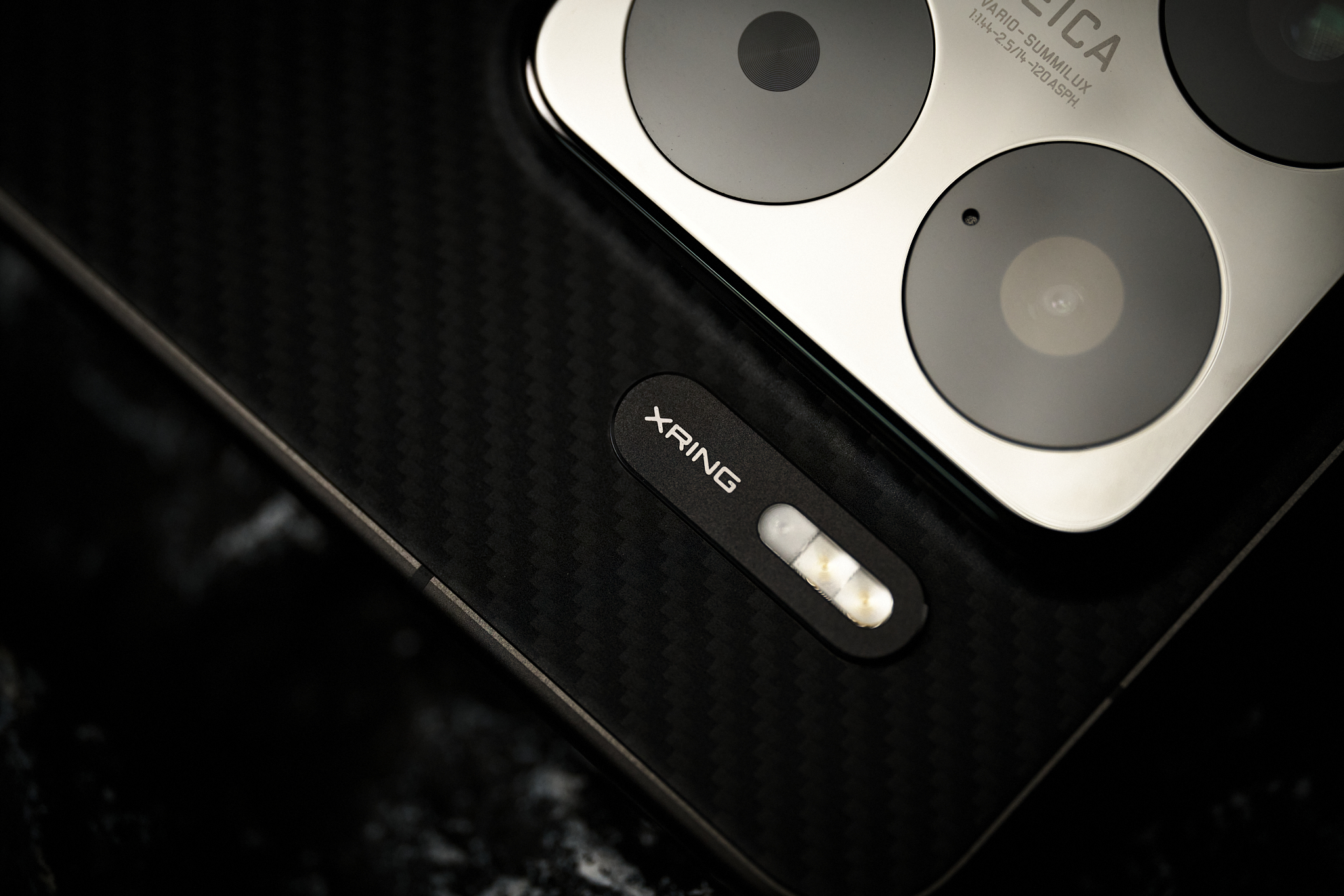
(Image source: Lei Technology)
Another example is the power button, which has some gold accents. Compared to Xiaomi's other models that use textures to distinguish between the power button and volume buttons, I prefer Xiaomi 15S Pro's design, which is both intuitive and aesthetically pleasing.
In terms of color options, Xiaomi 15S Pro is available in Dragon Scale Fiber and Far Sky Blue. I received the former. However, the Dragon Scale Fiber version feels smoother than expected, lacking the subtle raised texture of carbon fiber material.
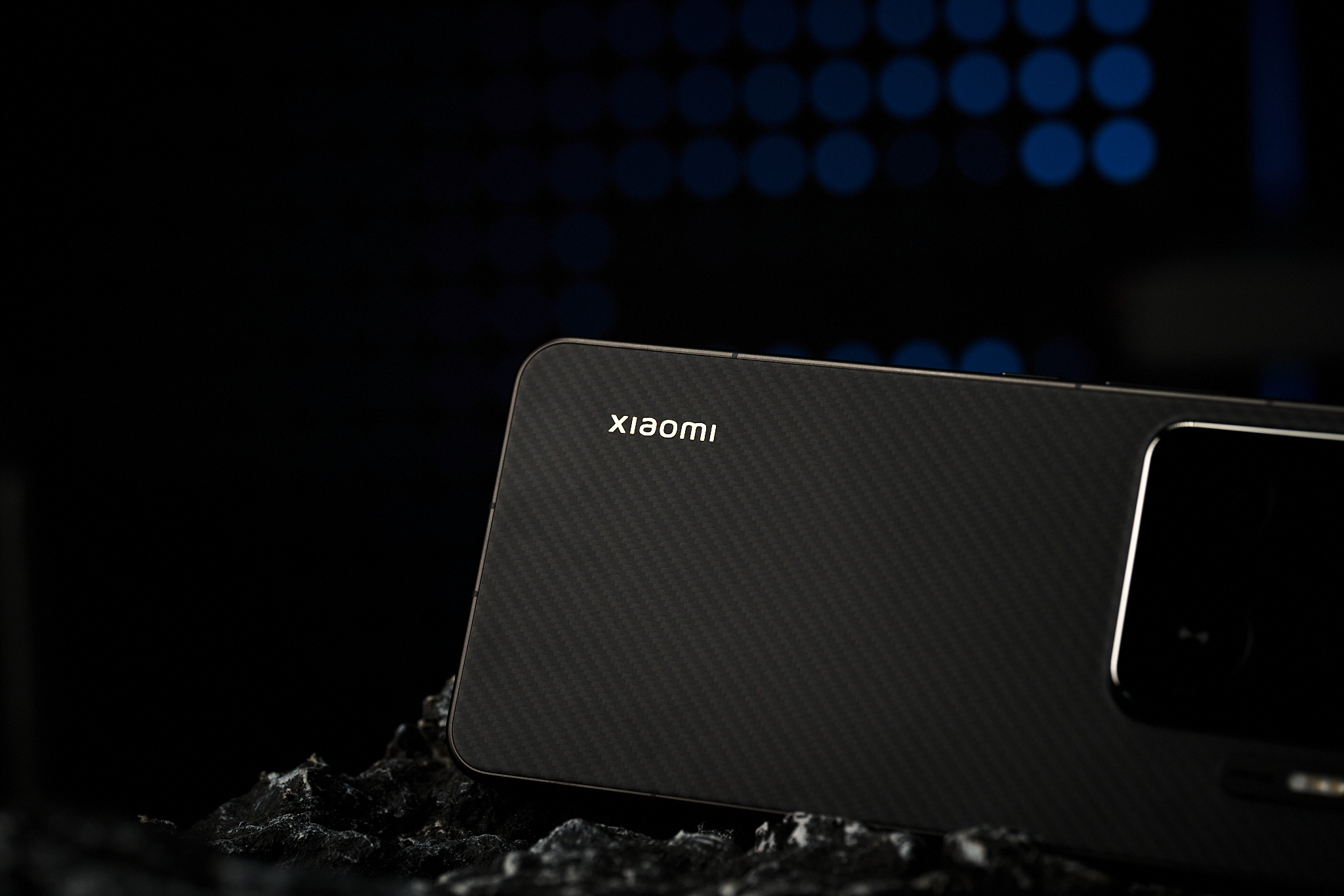
(Image source: Lei Technology)
Xiaomi's logo has been replaced with a noble gold color. I must say, I have a soft spot for gold.
The screen of Xiaomi 15S Pro has undergone a significant upgrade compared to Xiaomi 15 Pro. Here are some of its key specifications: 6.73 inches, M9 emitting material, 3200*1440 resolution, 522 PPI, 1-120Hz LTPO, 3200 nits peak brightness, 8,000,000:1 contrast ratio, support for HDR10+, HDR Vivid, Dolby Vision, and a professional true-color display.
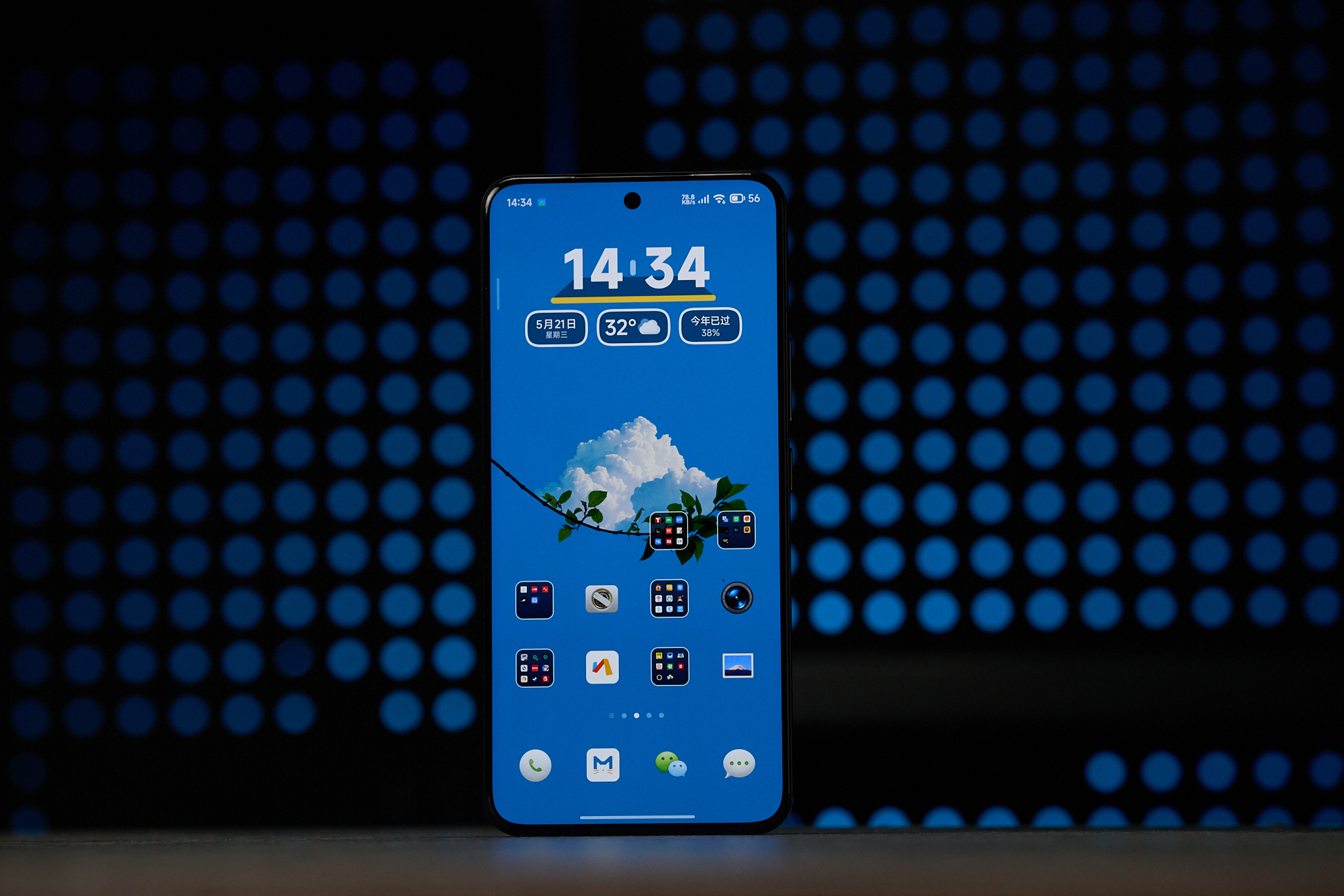
(Photo source: Lei Technology Production)
However, the biggest upgrade lies in the algorithm level. Based on the LTM feature of the Xuanjie O1, the Xiaomi 15S Pro can divide the screen into 192 zones, allowing each zone to adjust relevant parameters according to different images, thus displaying an image with more detailed brightness and darkness.
Readers who are familiar with Mini-LED TVs must have noticed that this is the zoning technology of Mini-LED TVs, right? Although I don't have professional testing equipment, after using it for a week, I can indeed clearly feel that the screen performance of the Xiaomi 15S Pro is superior to that of competitors and even its own flagship phones.
Another point worth mentioning is that the Xiaomi 15S Pro comes with an AR low-reflection film by default, reducing the light reflectance from the mainstream level of about 5% to 1.3%, which can significantly reduce its reflection under strong light. In fact, AR low-reflection film is not a new technology, and we can all buy AR low-reflection films on e-commerce platforms. However, their prices are basically in the high tens of yuan. For obsessive-compulsive users like me who need to replace a film every two months, this is also a considerable expense.
I guess Xiaomi will also list related AR reflection film products in the future, driving down the prices in this market.
Other configurations are also explained here: 50MP Light Hunter 900 main camera + 50MP 5x optical zoom telephoto + 50MP ultra-wide-angle lens, 6100mAh battery, 90W wired + 50W wireless charging, UWB ultra-wideband interconnection, UWB transport card, Starlink offline communication, TMR high-precision directional navigation.
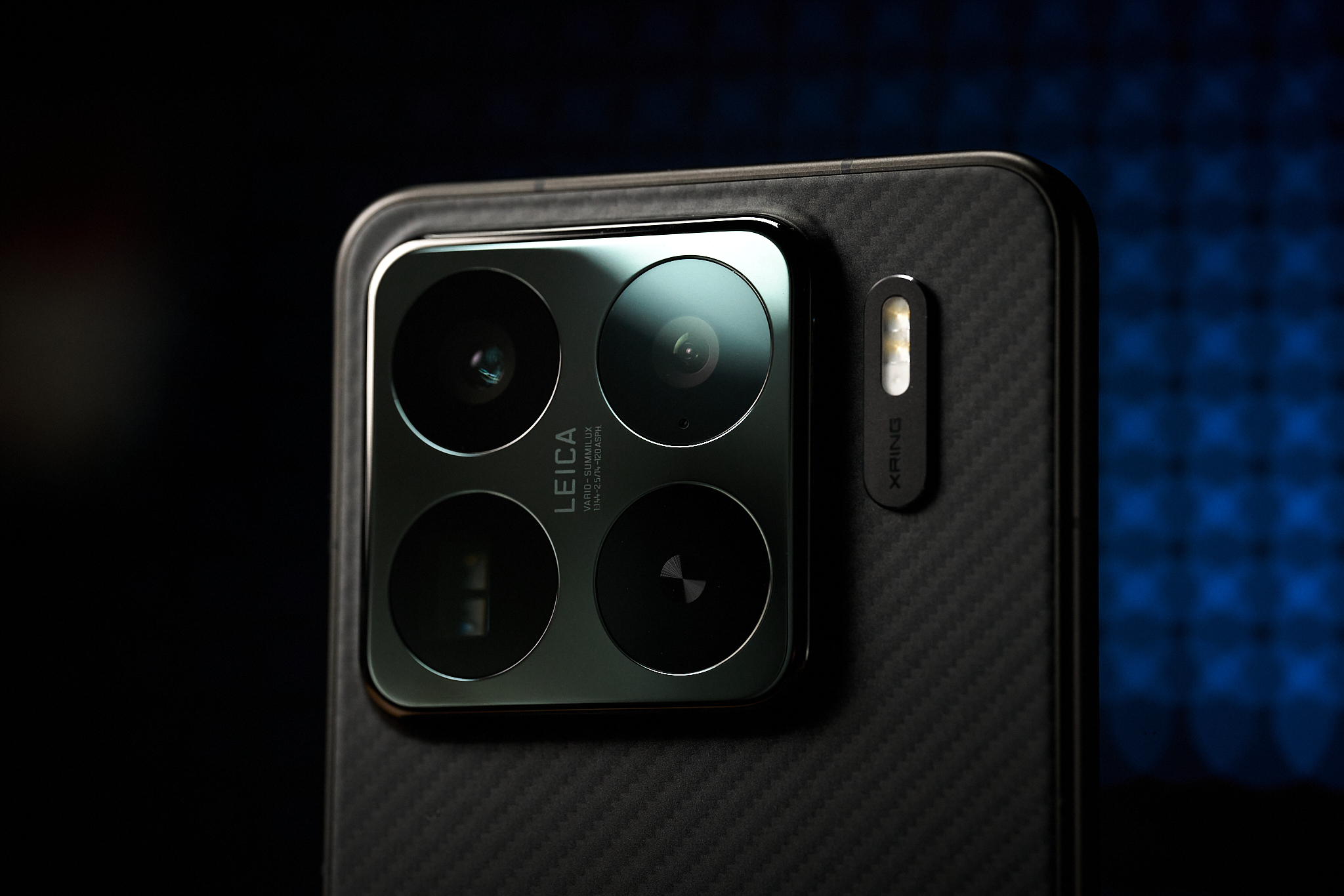
Whether from the perspective of performance or hardware, the Xiaomi 15S Pro is still a flagship phone with plenty of high-end specifications. If, as mentioned earlier, the Xiaomi 15S Pro had been released last year, its competitiveness would have been even greater.
With the blessing of Xuanjie, is the smoothest Pengpai OS here?
I have to say, the biggest change the Xiaomi 15S Pro brings to me is not in terms of performance, battery life, or power consumption, but in the system. As a loyal Xiaomi user who has used Xiaomi phones from Xiaomi 2s to Xiaomi 15 Ultra, I can't remember the last time I used such a smooth Xiaomi phone.
To give a common example, my Xiaomi 15 runs very smoothly in most cases, but in some small details, the performance of the Xiaomi 15 is quite "frustrating".
The first is the speed of waking up the camera. From the lock screen, it takes nearly a second to enter the camera interface, wait for the animation to end, and successfully focus. Sometimes, it's just this one or two seconds that make me miss some wonderful moments.

(Photo source: Lei Technology Production)
When the Xiaomi 15S Pro repeats this operation, there is no stagnation, no lag, and it's done in one smooth motion. I tried it dozens of times, and it's still as smooth and silky as before.
The second is daily operation. In the past, when using Xiaomi phones, I encountered a relatively intolerable scenario: when the Xiaomi phone's background is downloading a very large file (usually around 10GB), the body temperature will rise rapidly and the screen will drop frames. As a result, every time I download something, I have to put the phone aside and wait for the body temperature to drop before continuing to use it.
You must have guessed it, this situation did not occur at all on the Xiaomi 15S Pro.
There are two major difficulties in independently developing SoC: one is design and production, and the other is the tuning of software and hardware. It is obvious that Xuanjie O1 not only achieves flagship-level hardware (although it has not yet reached top-tier flagship standards), but also puts in a lot of effort in software tuning. Although I have only had the Xiaomi 15S Pro for a week, its system performance has already brought quite a shock.
Summary: Xiaomi's flagship with significant meaning, empowered by Xuanjie O1
Finally, let's summarize the Xiaomi 15S Pro according to Lei Technology's review template:
Pros:
1. The performance of Xuanjie O1 far exceeds expectations, whether in terms of performance, power consumption, or ISP, it is at a flagship level;
2. With the support of the self-developed chip, it may be the smoothest Xiaomi phone currently available;
3. Although the design has only undergone minor changes, it is very memorable;
Cons:
1. Average static photography capabilities, requiring subsequent OTA updates.
2. Wireless charging power is only 50W.
In terms of price, the Xiaomi 15S Pro only has two versions:
16GB+512GB version: 5499 yuan; (4999 yuan after state subsidy)
16GB+1TB version: 5999 yuan. (5499 yuan after state subsidy)
Actually, my original expectations for Xuanjie O1 were not high. Initially, I thought it would be commendable and encouraging if it could reach the level of a mid-range chip. I really didn't expect Xuanjie O1's performance to exceed expectations so much.
We can therefore see that Xuanjie O1 is not a desperate gamble by Xiaomi, but a product created by Xiaomi's years of accumulated technology and supply chain.
Of course, it is unrealistic to expect Xiaomi to gain a firm foothold in the high-end mobile phone chip market with just one Xuanjie O1. Only after the future release of Xuanjie O2 and O3 can we assert whether Xiaomi has truly become a mobile phone manufacturer capable of independently developing high-end mobile phone chips.
Returning to the product itself, even if the Xiaomi 15S Pro sets aside the aura of its self-developed chip, it is still an excellent product with an overall score of 80 points. It offers basic experiences such as lower power consumption, higher screen quality, and faster charging speeds, while also presenting a new understanding of the flagship experience. These are all experiences accumulated by Xiaomi after years of trials and tribulations in the high-end mobile phone market.
So, would you buy such a flagship product that is truly flagship-level and also has Xiaomi's self-developed aura?
Source: Lei Technology
Images in this article are from: 123RF Authentic Library Source: Lei Technology







